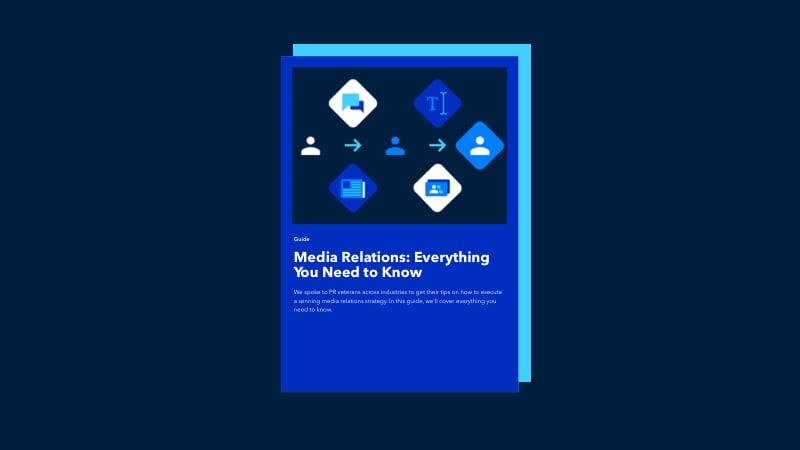The biggest challenge for brands today is to help relevant content cut through the noise and rise to the top in a meaningful way. Using newswires as a distribution channel to reach your audience only adds to the noise instead of earning your brand the exposure it needs. Here's what you need to know when it comes to landing coverage in an ever-changing media landscape.
.jpg?width=736&name=282538-VIZ_0021-3ceb18-original-1528386828%20(1).jpg)
Why using PR newswires is bad for your brand
PR newswires cannot deliver what they promise
PR newswires started as a service to companies to have a broader reach to an audience they normally wouldn't have access to. It was this coverage in earned media that initially worked nicely but eventually was the beginning of information overload. Sadly newswire services have ultimately diluted the relevancy and effectiveness of their use. In this article, we analyze what exactly is the problem with newswires and how they hurt your brand.
The publisher as the gatekeeper of news
By the very definition of the word "publishers" they are in control of what they publish to their audience. Editors and their teams would be careful to make sure they provide a broad and impartial account of the news. This news would come from different sources. Internally from their own journalists on the payroll and externally from sources such as news agencies. The demand for news agencies was driven by the need to cover broad topics that society was interested in - no publisher could cover that full topical and geographical spectrum and thus news recording was specialized to news agencies.
News agencies became the distributor of world events
Three of the world’s largest news agencies include Agence France-Presse (AFP), Associated Press (AP), and Reuters. Their core business has always been to capture news and distribute it around the world as fast as possible. In the early days this was done by telegraph — the wire — and thus the term 'Newswire' was coined. From this newsfeed, the journalists/editors at the local media publishers could pick up what they thought was interesting.

Impartial news agencies
All three the major news agencies began with and continue to operate on a basic philosophy of avoiding partiality, offering the same news feed to all subscribers. Anthony De Rosa, Digital News Chief at Reuters, explains “Reuters provides our readers with reliable and timely news, information, opinion, and analysis... being as comprehensive as possible so readers come to us first for all they need to know.”
We’re not just reporting our own news [...], but have become a beacon for all news, being as comprehensive as possible so readers come to us first for all they need to know.Anthony De Rosa, Digital News Chief at Reuters
The business model is also aligned for impartiality - the information that is gathered and reported is sold to subscribing media publishers and businesses. The financial incentive here aligns with the mission of providing impartial news at high quality and factual description of events.
Newswire as a product
Where news agencies would charge the publishers access to their news, PR newswire services charge businesses to be included into the newswires that publishers would receive. Initially, this worked fine as journalists would pick up interesting pieces that fit their beat. However, this eventually backfired as the incentive to provide qualitative and factual news was missing for the press release distribution services. Companies including PR Newswire, PR Web, and CisionWire, receive money from companies that write articles in exchange for pushing it to publishers – regardless of relevancy or accuracy.
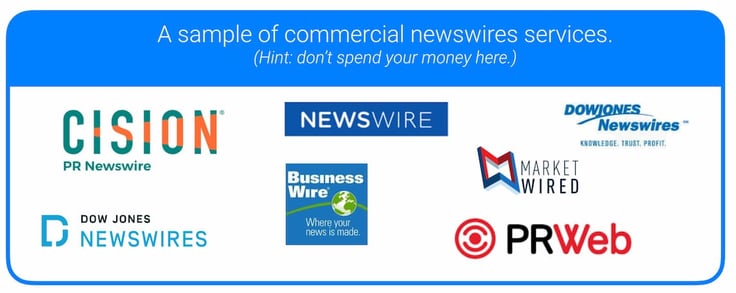
News is not always impartial
Of course not all news production is so widely neutral, things get messy when branded content is pushed such as promotional, affiliate, or advertising content. In some cases, news agencies will be politically charged. Some can be corporations, like the Sinclair Broadcast Group, that tend to push their political agenda both globally and locally. Governments may also control news agencies such as China (Xinhua) and Russia (ITAR-TASS).
The independent press will ignore your PR newswire piece
There is much more to say about politically charged news — which we won't dive into now — but this actually highlights the beauty of having an independent press: as long as it controls what they can publish independently from the news agencies then there is some level of impartiality. But herein lies also the first problem with PR newswires: the independence of publishers means they are more likely to ignore your piece sent over the wire unless it meets their standard of what entails news.
Journalists don’t read PR newswires because they know these stories are nothing but advertisements.Mark Macias - Former CBS and NBC producer.
As a former producer at CBS and NBC explains:
Newsrooms around the world work the same, every reporter typically has access to various newswires that are syndicated by the news organizations, like AP, Reuters, CNN, TV affiliate feeds, local newswires, etc. These different newswires inside the newsroom are all vetted sources for news. Reporters know when they review these different AP or Reuters stories that they are written by journalists. It’s different with PR newswires. Reporters know these press releases are written by publicists – not journalists. It’s another reason why many newsrooms don’t even provide access to these PR newswires. In a world where information needs to curated, newsroom leaders frequently choose the option to eliminate this PR feed.
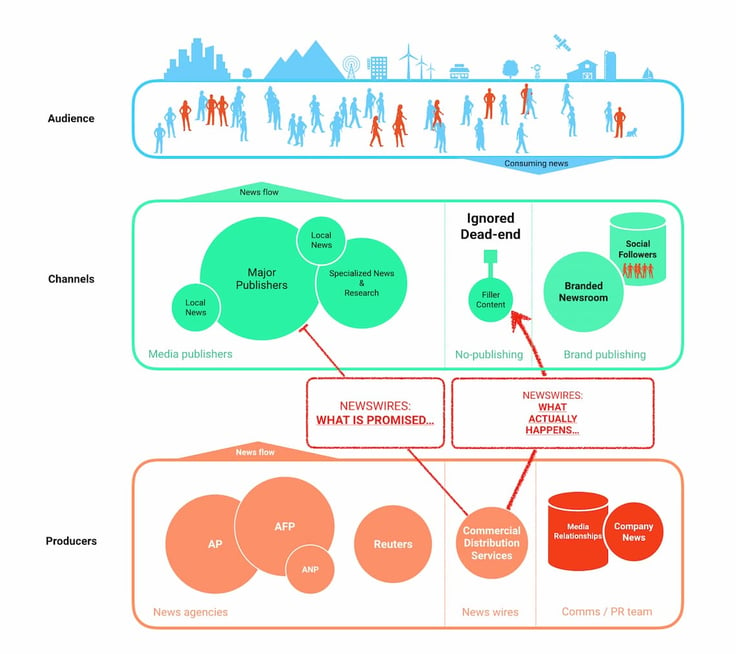
PR newswires create low-quality content-filler end-points
As a countermeasure to the low exposure and limited interest from media publishers, the PR newswires have tried to create a solution to this problem by becoming their own publisher. In order to create coverage, they have created partnerships and provide a syndicated network of sites where your news piece will be pushed to.
Syndicated content is a dead-end
This approach can lead to your brand being published by some large publishing names — unfortunately, since there is no journalist behind it - it is most often an automatically generated (re-)post that is unlikely to gather any traffic as it will be one of thousands syndicated press releases posted on a forgotten subsection of Yahoo! Finance.
See below for an example list of syndicated sites that PR Newswire says a specifically health-targeted press release was published. On closer inspection all the better-known brands like Bloomberg, CNBC all have a specific subsection in their website where they publish ALL news syndicated from the commercial newswires - the key is that it is not in any way edited or reformatted just plain copy/pasted into forgotten sections with very little exposure from these publications better-trafficked pages.
"Nobody is responsible for this content"
What was once a welcomed opportunity to share business information has turned into a bastardized form of public relations… with very little ROI. Especially when considering how much one pays for this mass distribution. The irony here is that the PR newswire services claim that the press releases are "picked up" by all these syndicates where they just republish the exact press release verbatim. Sometimes but not every time the story is accompanied by the following text: “The information on this page is provided by [Commercial Newswire redacted]. [Syndicate website redacted] is not responsible for this content.”
Changing landscape for publishers
Disseminating information has changed a lot over the years. The pure-publishers, like the New York Times, create and publish their own content. All content decisions are made by the newsroom editors, they decide what to publish and thus what their audience could be reading.
The media landscape is changing. Here's what you can do to keep up.
Gaining coverage in a changing media landscape
Later content platforms, like YouTube for video or Medium for blogging facilitate the production and distribution of content. They weren’t concerned about the content itself and ensured every creator – publishers – had the exact same access and means to distribute their message. These platforms pushed the burden of promotion to the content creators. Of course they did help where they could through pushing related content, but the content wouldn't go anywhere without your own active promotion.
Social media drives a new direct audience
Social media platforms go a step further in providing an audience for content creators through their extensive algorithms to show their billions of users content they cared about. For Facebook this is their newsfeed EdgeRank algorithm - which continues to evolve over time to supply their audience with the most 'relevant' posts. In the case of the recent changes made by Facebook this means it is increasingly hard to for a brand to be seen in the News feed unless it is already shared by your audience, which looks a lot like a chicken-and-egg problem.
Blurring lines between platform and publisher
None of this is new stuff. However, it's important to recognize the trend where in the past brands depended on publishers to access their audience, now brands need to be actively building their own audience directly on the various platforms and social media. The tricky bit here is that these platforms are flooded with all sorts of content, leaving its audiences overwhelmed with information. To make matters worse, publishers will often redistribute their content to the (social) platforms en masse. This has left relevancy of the utmost importance and has caused the lines to blur between what is publisher and what is a platform.
Less dependence on traditional publishers
For many organizations, gaining consistent — and positive — coverage in the media can have an incredible impact on their brand. At the same time, traditional (big) media have been struggling to maintain their audience, much of the role of publishers (spreading news to the world) has been taken over by social media and the platforms described above. And that is exactly where companies go wrong. Rather than taking the entire media landscape into account, for some reason they seem to think only the big fish (read: traditional big media) are worth targeting. Only targeting old media means skipping an increasingly large part of your audience.
Six reasons why using a press release distribution service will harm your brand
I’m in no way saying that press releases are useless – quite the opposite. Press releases are a valuable resource to tell company stories, educate potential clients and customers, and generate earned media coverage. But it’s only as good as the targeting and messaging. And if you use a PR newswire service to distribute your press release you are throwing all that targeting out of the window. Not only that you will harm your brand.
If this is painting a bleak picture of newswire services, good. It’s meant to.
It’s nothing personal, but professionally it needs to be understood not to waste time or resources on PR newswires as a distribution service for your news. It simply won’t get the job done. When deciding whether to send a newswire release, ask yourself what your goal is. Most of the time it should be visibility in the form of coverage or targeted audience, with positive exposure for your brand. Let's see how using a newswire service will actually harm your brand instead of get you the exposure you want.
Reason 1: Your news will be ignored by journalists
Traditional distribution methods employed by commercial newswire services send company news and information directly to editorial newsrooms. While you’d think this would lead to a higher chance of gaining coverage, unless you're a well-known company, not many reporters are going to spend the time crafting stories based on content found on the wire.
In a recent report, only 37 percent of journalists surveyed use wires daily. Journalists know the value of relevancy. As stated in that same survey, "It's important that every news item is relevant and useful otherwise you end up wading through releases.” As Georgina Prodhan, editor at Reuters explains, “We view them as a kind of broadcast medium for press releases.” And with no journalists on a commercial newswire’s payroll, who’s the gatekeeper of quality? Unedited, irrelevant content pushed by commercial newswires only creates a time suck for journalists and leads to untrustworthiness.
Journalists are busy fielding a flooded inbox of daily pitches. When it comes to newswires, they simply don’t have the time to peruse spammy, mass distribution lists. Without doing some old-fashioned media relations, it’s highly unlikely a reporter will contact you. You’ll get better results by developing relationships with reporters and pitching them directly.
Reason 2: Your brand will be associated with low-quality publishers
The majority of syndicated releases picked up by media outlets are not editorial reviews but rather automatically syndicated to low-quality websites. In other words, unless you’re looking solely for vanity reporting, this type of “coverage” means nothing.
Reason 3: Opportunity costs of missed SEO juice for your domain
News release distribution services are not earned media. Google has explicitly stated that press release links will not help rankings. Any SEO juice you might get from backlinks is actually being giving away to newswire platforms. Instead, consider having your own newsroom. This is a massive opportunity to be a brand publisher and share organic, unique, and highly visual articles on your own website. Furthermore, there’s a specific reason the value of earned media coverage is higher than advertising: people believe media outlets more than advertisers. Just think about it, who would you believe more using the phrase “best tool/software/product” – an advertiser or an expert? The latter, right?
Reason 4: It's unethical
Additionally, with an increase in native advertising, content written on behalf of the company should be labeled pay-to-play. But it’s not. Where is the ethical standards of this type of reporting? Even if the syndicated websites are adding disclaimers such as “The information on this page is provided by [Newswire redacted]. [Publication redacted] is not responsible for this content” the content is still portrayed as a genuine news article.
Reason 5: Be careful that you don't lose your own press releases' IP
Apart from the low-quality content syndication in some cases PR newswires have been known to send take-down notices for a relevant news article being picked up by third parties not in their network. Here's a story from a travel blog that recently had this happen to them.
Reason 6: You are not learning what you should be learning
By staying away from the PR newswires and standing on your own feet your will learn how to get effective exposure in your sector, what channels work, and who to reach out to. Your communications team should be learning how to form your brand's own resonating narrative, your own understanding of your industry's influencers and journalists, and of course forming your own relationships with those people. On top of that, you should have full access to the information behind what news releases are being opened, read, and shared - something you will only have partial insight into using a newswire (if you can even trust the numbers).
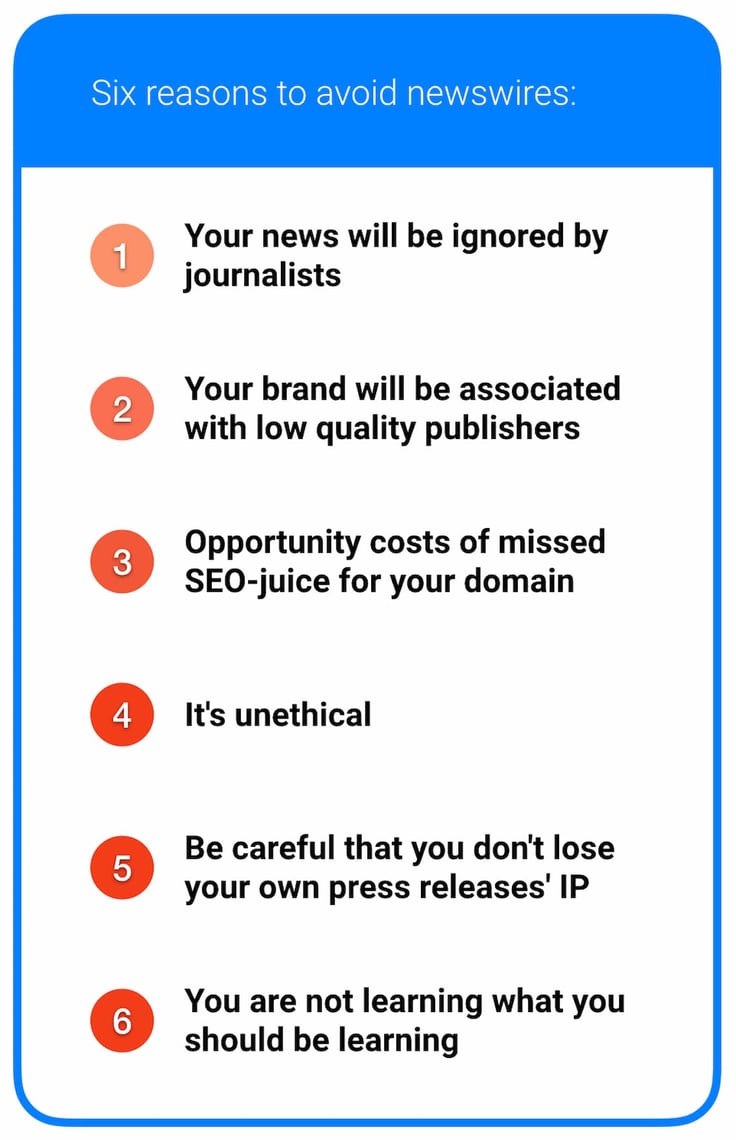
In summary
The challenge for brands today is to help relevant content cut through the noise and rise to the top in a meaningful way. Using newswires as a distribution channel to reach your audience only adds to the noise instead of earning your brand the exposure it needs. Coverage and earned media opportunities rely heavily on a brand’s storytelling integrity. And that integrity requires authenticity which in turn requires that communications be transparent and clear in order to tell their story. Without it, companies jeopardize their relationships with the media and their customers. They also risk backlash and damage to the brand.
There's simply a better, more relevant, way. Simply put the work in. Target your key journalists and understand what they write about, and what their audience wants to read. From there, pitch a story to them exclusively, provide them with good content, and do everything in your power to help them succeed.
Sound daunting? Don't worry. Technology has made it easier to be your own publisher and how to get started sharing company news. Here's why your company needs a press page.
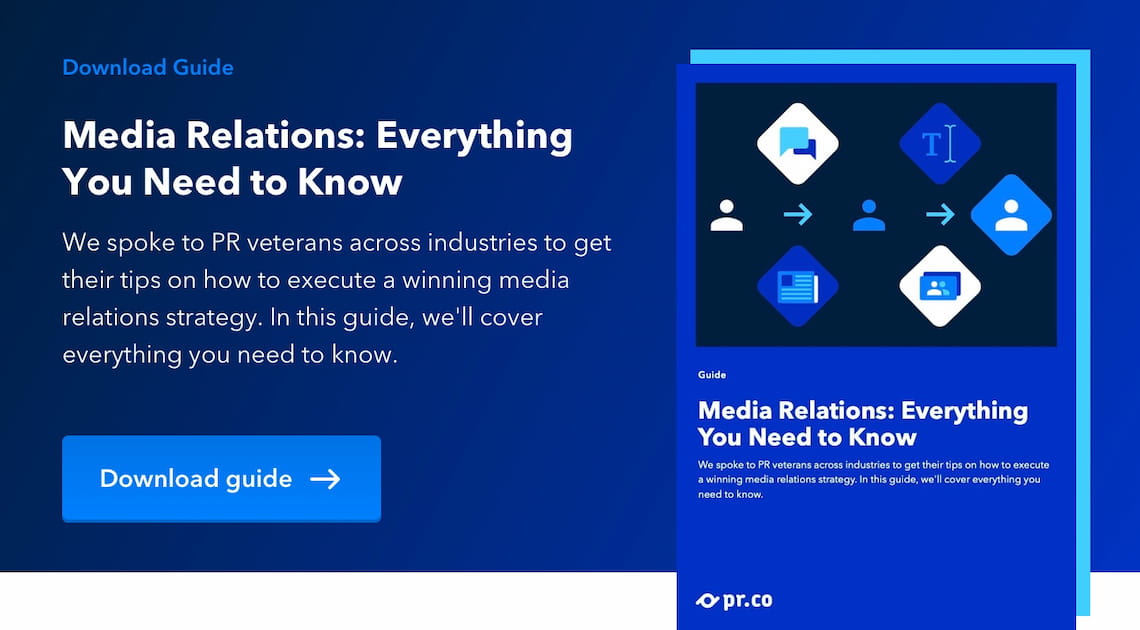
Sjors Mahler is the Commercial Director at pr.co. He’s worked with PR and communications teams for 9 years and has organized dozens of meetups and events for the Amsterdam PR community. Sjors has an MSc in Persuasive Communications and specializes in branding, sales strategy, and inbound PR.. Connect on LinkedIn or send an email






